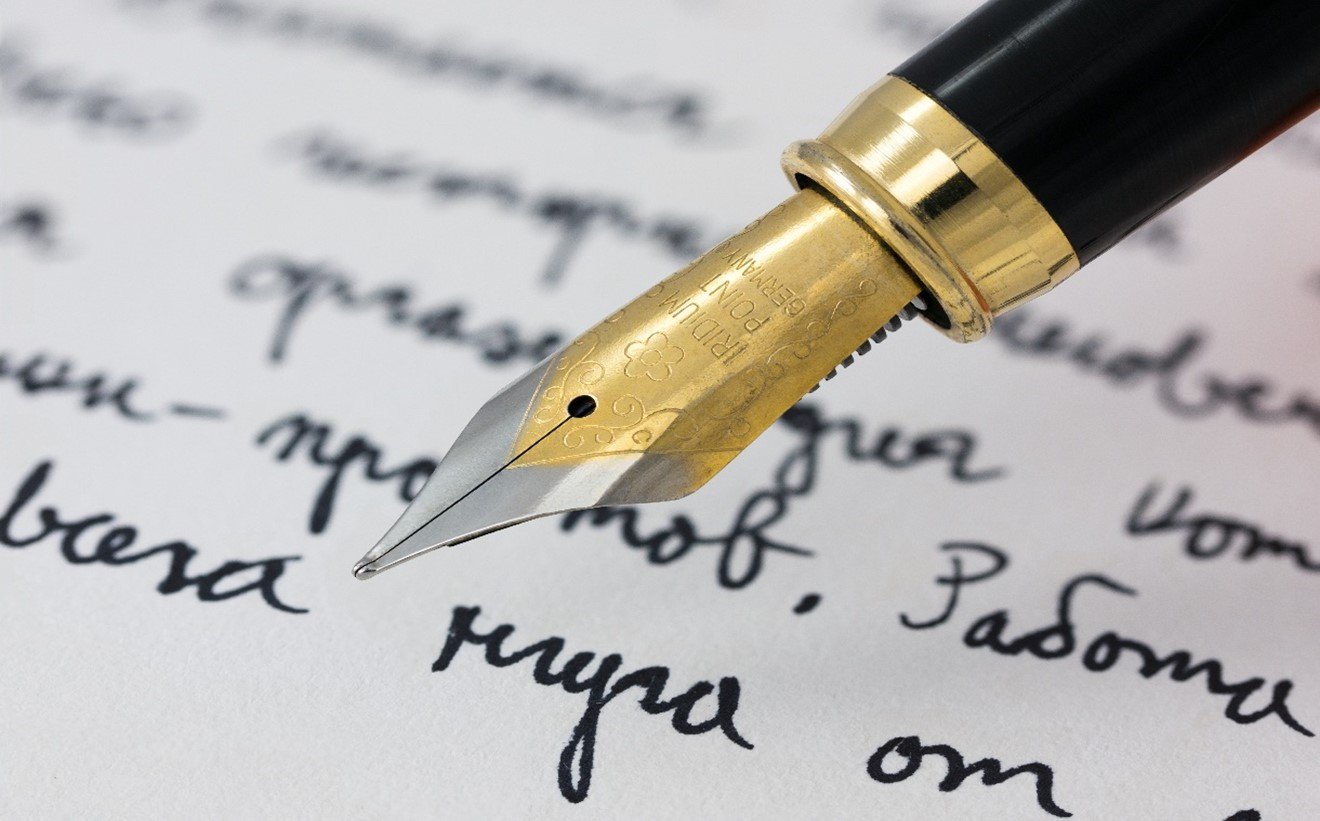
In Praise of Handwriting.
“My two fingers on a typewriter have never connected with my brain. My hand on a pen does. A fountain pen, of course. Ball-point pens are only good for filling out forms on a plane”
Graham Greene.
As we spend our lives increasingly connected by technology to each other and limitless sources of cat videos, it is worth stepping back to take a deep breath and perhaps record where we are and how we are feeling.
Keying words into a smartphone whilst wrestling with predictive text doesn’t allow for slow and deliberative thought. Typing on a computer with its multiple possible distractions can be quick but can also feel automated.
That’s why I like hand writing. Ideally this should be done using a fountain pen with a well-crafted nib. There is something almost sensual about writing with a weighted pen using a soft gold nib that allows the words to flow onto the page. The paper should be of good quality and lightly lined, giving a simple framework that the words can rest on. At best, it will be contained within a notebook, perhaps with a soft leather cover that somehow adds significance to the words that are being stored within it.
There is also a strong link back to the past, with a fountain pen being an evolution of a quill and ink-well into a device that stores the ink within it. Petrache Poenaru, a Romanian mathematician is often credited with the first patent for a fountain pen in 1827. There is however evidence of earlier versions, with reference being made to the development and use of a fountain pen by a Fatimid Caliph in Cairo in 953. Leonarda da Vinci is credited with having designed and perhaps used one and Samuel Pepys in 1663 commented on a “silver pen … to keep inke in.” The pens in use today have not changed much over the last 100 years – with classic pens such as the Parker Duofold from 1927 still available in new versions.
And what to write? I’ve started to keep a diary – using a simple notebook. There is a page for each day which creates the discipline of editing for the highlights in a busy day - or of looking for the events of significance in a quiet one. It is not profound, and will be of little interest to future generations, but for me it helps to recognise and make sense of what happens and how I react to it.
There is also a notebook for quotes. These come thick and fast from articles and books, but I find I have poor recall. Writing them down in a small notebook helps me remember them – but also seems to convey a symbolic significance that they have been captured and stored ready for future use to understand a situation or clarify a point.
As a coach, I also try to record my learnings from every session and what feedback I have been given or will give myself. Again, it is often prosaic – but over time it helps build and consolidate. The act of articulating thoughts by writing in long hand using a physical connection from the brain and hand through the pen into the page seems to structure and crystallise them. It also gives them physical form, and takes them outside of one’s internal consciousness enabling them to be defined more clearly and perhaps put into a more helpful context.
Studies into the subconscious have also reported the benefits of writing down our thoughts. Ruminating on issues that were troubling them did not improve the participants’ well-being, but being required to write them down did. The act of writing seemed to put some structure into the thought process which had a measurably positive effect. The studies did not test for the additional benefits of a fountain pen, perhaps providing scope for further research.
So why not try it? Get a good pen - a gold nib is worth it - and a notebook or two. Start to capture your thoughts, or other people’s if you feel they have a particular relevance. Don’t worry about anyone else reading your work – it’s the act of distilling your thoughts and converting them into words on paper that matters.
And if you ask - yes, I wrote this in long hand – using my fountain pen…